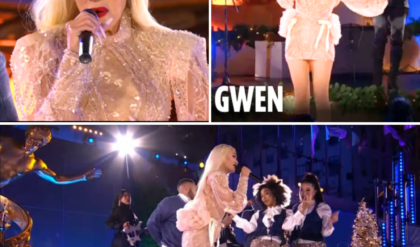Disney, the entertainment titan synonymous with animated classics, continues to stumble with its live-action remake strategy despite costly failures. The recent flops of Snow White (2025) and The Little Mermaid (2023) have left the company nursing significant financial losses, yet reports suggest a new princess adaptation is already in preparation for a 2026 release. This persistence raises questions about whether Disney has learned from its missteps or is doubling down on a flawed formula. This article explores the disappointing performances of Snow White and The Little Mermaid, the upcoming project, and the broader implications for Disney’s approach to its iconic catalog.
The Snow White Debacle
Disney’s live-action Snow White, released on March 21, 2025, was touted as a reimagining of its 1937 animated landmark, the studio’s first feature-length film. Starring Rachel Zegler as the titular princess and Gal Gadot as the Evil Queen, the $270 million production aimed to modernize the fairy tale with a feminist twist. However, it opened to a dismal $43 million domestically, dropping 66% in its second weekend to $14 million, culminating in a global haul of just $143 million. With marketing costs pushing the total investment past $370 million, the film is projected to lose upwards of $250 million, marking it as one of Disney’s biggest box office disappointments.
The failure stemmed from multiple issues. Zegler’s casting as a Latina Snow White sparked controversy, with some fans decrying the departure from the character’s “skin as white as snow” description, though Zegler defended it as a step toward inclusivity. Her comments during the press tour, dismissing the original’s prince-centric narrative as outdated, alienated traditionalists. The decision to replace the seven dwarfs with CGI “magical creatures” after backlash from actor Peter Dinklage further fueled criticism, with audiences perceiving it as a pandering move that undermined the story’s charm. Reviews were lukewarm, with a 44% Rotten Tomatoes score, and audience turnout reflected a broader fatigue with Disney’s remake approach.
The Little Mermaid’s Underwhelming Splash
Preceding Snow White, The Little Mermaid (2023) offered a mixed bag. Starring Halle Bailey as Ariel, the $250 million film grossed $569 million worldwide but fell short of blockbuster expectations given its budget. Its domestic opening of $95 million was solid but paled compared to Maleficent ($69.4 million) and Cinderella ($67.8 million) when adjusted for inflation. The international performance was weaker, with cultural resistance in markets like China contributing to its subpar returns.
The casting of Bailey, a Black actress, drew racist backlash reminiscent of Zegler’s experience, though she received widespread support. Creative choices, such as altering songs and the plot to emphasize empowerment, divided fans, with some arguing it diluted the original’s magic. Critics gave it a 67% Rotten Tomatoes score, and while it avoided a total flop, its profitability was marginal after theater cuts and marketing costs. The film’s performance signaled a shifting audience appetite, yet Disney pressed forward with similar projects.
The New Princess Adaptation: A Risky Gamble
Despite these setbacks, Disney is reportedly gearing up for another princess remake, with production slated to begin in 2026. Speculation points to Tangled, the 2010 animated hit about Rapunzel, as the next target. Directed by Michael Gracey, known for The Greatest Showman (2017) and Better Man (2024), the project was in development before Snow White’s release but paused amid the latter’s poor reception. Sources suggest Disney is reevaluating its strategy, but no cancellation has been confirmed, indicating a tentative commitment.
The Tangled remake could leverage the original’s modern sensibility and strong soundtrack, potentially appealing to younger audiences. However, the precedent set by Snow White and The Little Mermaid raises concerns. If Disney repeats past mistakes—overreliance on CGI, controversial casting changes, or heavy-handed modernizations—it risks another flop. The company’s decision to proceed suggests confidence in its brand power, but it also hints at a reluctance to pivot to original content, a move some analysts argue could revitalize its pipeline.
Why the Flops Happened
Several factors explain Disney’s recent remake struggles:
Nostalgia Overload: Audiences crave familiarity, but beat-for-beat recreations with added “woke” elements often feel redundant. Snow White’s attempt to reframe the princess as a leader clashed with its adherence to the original plot, leaving it neither fresh nor faithful.
Casting Controversies: Inclusive casting, while progressive, has triggered backlash from purists who view it as erasing cultural heritage. The Zegler and Bailey experiences highlight a divide between Disney’s intent and audience expectations, amplified by social media outrage.
Budget Bloat: High production costs—$270 million for Snow White, $250 million for The Little Mermaid—leave little margin for error. CGI-heavy films like these, with extensive post-production, escalate expenses, making profitability elusive without massive box office returns.
Critical and Audience Disconnect: Mixed reviews and middling CinemaScores (B+ for Snow White) reflect a lack of consensus. While some praise the updates, others see them as forced, eroding the magic that defined the originals.
Market Saturation: With over a dozen live-action remakes since 2010, from Alice in Wonderland to Pinocchio (2022), the market may be oversaturated. Competitors like Universal and Warner Bros. are exploring original IPs, leaving Disney lagging.
Disney’s Response and Strategy
Disney’s reaction to these flops has been cautious but not transformative. After Snow White’s opening, the company scaled back its premiere, limiting media access, a move interpreted as damage control. CEO Bob Iger has defended the remake strategy, arguing that ancillary revenue—streaming on Disney+, merchandise, and theme park tie-ins—can offset theatrical losses. Analysts agree, noting Snow White could break even through these channels, though the initial hit to brand prestige is undeniable.
The Tangled project’s delay suggests some introspection, but Disney’s pipeline still includes Moana (2026) and Lilo & Stitch (2025), signaling a commitment to the formula. This persistence may reflect corporate inertia—remakes are low-risk creatively, relying on proven IPs—rather than a lack of awareness. However, the company’s failure to address root causes, such as audience alienation or budget mismanagement, suggests a disconnect from market realities.

The Broader Implications
Disney’s remake woes could have far-reaching effects:
Financial Strain: A string of flops threatens Disney’s bottom line, especially as streaming growth slows. Investors may pressure the company to diversify, potentially cutting into its $33 billion annual revenue.
Creative Stagnation: Relying on remakes stifles innovation, a concern echoed by fans who lament the absence of new animated classics since Frozen II (2019). Original films like Elemental (2023) have underperformed, reinforcing the studio’s remake focus.
Cultural Backlash: The “go woke, go broke” narrative, popularized on platforms like X, gains traction with each failure. While not the sole factor, cultural pushback against perceived political agendas could deter audiences, particularly in conservative markets.
Competitive Pressure: Rivals like Netflix and Amazon are investing in original content, from The Sea Beast to Red, White & Royal Blue. Disney risks losing relevance if it fails to adapt, especially as younger viewers turn to these platforms.
A Path Forward
To avoid repeating history, Disney could consider:
Balanced Updates: Retain core elements that fans love while introducing subtle modern twists, as Cinderella (2015) did with its elegant reimagining.
Lower Budgets: Reduce reliance on extravagant CGI, opting for practical effects to cut costs, as seen in Pete’s Dragon (2016).
Audience Engagement: Conduct pre-release focus groups to gauge reactions, addressing controversies early, unlike the reactive approach to Snow White.
Original Content: Invest in new stories, leveraging its creative talent to build future classics rather than recycling past successes.
Conclusion
Disney’s decision to push forward with a new princess adaptation in 2026, despite the flops of Snow White and The Little Mermaid, underscores a troubling lack of adaptation within the company. Snow White’s $250 million loss and The Little Mermaid’s marginal profitability highlight a formula that no longer resonates universally. While ancillary revenue may soften the blow, the brand’s prestige and audience trust are at stake. As Disney prepares Tangled, it faces a critical juncture: double down on a failing strategy or pivot to innovation. The outcome will determine whether Disney can reclaim its fairy-tale magic or fade into a cautionary tale of its own making. As of May 7, 2025, the industry watches, waiting to see if Disney will finally learn its lesson—or stumble again.





